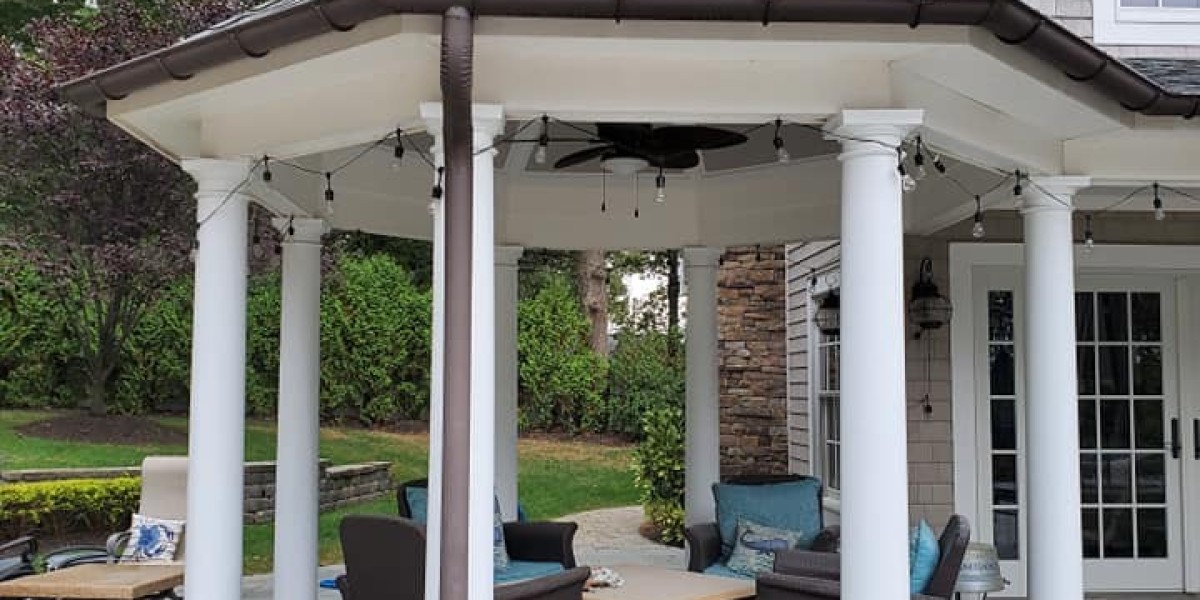Concrete pavers have become one of the most popular choices for homeowners, builders, and landscapers looking to enhance outdoor spaces with both functionality and beauty. Whether it's for a driveway, patio, walkway, or pool deck, concrete pavers offer a highly durable and versatile option that can be customized to fit any design style. In this comprehensive guide, we will explore the benefits of concrete pavers, their various applications, installation processes, and tips for maintaining their beauty for years to come.
1. What Are Concrete Pavers?
Concrete pavers, also known as paving stones, are pre-cast blocks made from a mixture of cement, sand, gravel, and water. They come in a wide variety of shapes, sizes, colors, and textures, allowing for endless design possibilities. Concrete pavers are typically laid on a compacted base of gravel and sand, interlocking to create stable, long-lasting surfaces. The interlocking nature of pavers allows for flexibility and durability, making them resistant to cracking and shifting.
Unlike traditional concrete slabs or asphalt, pavers are installed in individual units, which can be easily replaced if damaged. This makes concrete pavers a practical and attractive choice for homeowners looking for a low-maintenance, long-lasting solution for their outdoor spaces.
2. Benefits of Concrete Pavers
Concrete pavers offer numerous advantages that make them an excellent choice for outdoor applications. From durability to design versatility, here are the key benefits:
Durability and Strength
One of the most significant benefits of concrete pavers is their durability. They are designed to withstand heavy loads, making them ideal for driveways and other areas with high traffic. The interlocking system also allows pavers to flex and shift slightly with the ground’s movement, reducing the risk of cracks and damage over time. In regions with freezing and thawing cycles, concrete pavers are an especially resilient option, as they can expand and contract without breaking.
Versatility in Design
Concrete pavers come in an array of colors, shapes, and patterns, giving homeowners and designers the freedom to create a truly custom look. Whether you're aiming for a sleek, modern design or a more rustic, traditional appearance, there are paver styles to match your vision. Some pavers are designed to mimic the appearance of natural stone or brick, offering high-end looks at a more affordable price.
Easy Maintenance
Maintaining concrete pavers is relatively simple. If a single paver becomes damaged or stained, it can be easily replaced without disturbing the surrounding pavers. Additionally, the gaps between pavers allow for water drainage, preventing puddling and reducing the likelihood of erosion or water damage. To keep pavers looking fresh, occasional cleaning with a pressure washer and resealing every few years is recommended.
Cost-Effective
Compared to natural stone or high-end materials like travertine, concrete pavers are a cost-effective solution that still offers durability and aesthetic appeal. Their long lifespan and low maintenance requirements also make them a financially smart choice in the long run.
Eco-Friendly
Concrete pavers are an environmentally friendly option because they allow rainwater to seep through the joints between each paver, reducing runoff and helping to recharge groundwater supplies. Some pavers are even designed specifically for permeable installations, further enhancing their environmental benefits.
3. Common Applications of Concrete Pavers
Concrete pavers are incredibly versatile and can be used for various outdoor applications. Here are some of the most common uses:
Driveways
Concrete pavers are a popular choice for driveways due to their strength and ability to withstand heavy vehicle traffic. Unlike poured concrete or asphalt, paver driveways resist cracking and can handle the stress of freeze-thaw cycles. Additionally, they offer a wide range of design options, allowing homeowners to create intricate patterns or color combinations that enhance curb appeal.
Patios
Concrete paver patios are perfect for creating an inviting outdoor living space. Their design versatility allows for customization to match any architectural style or personal aesthetic. Whether you prefer a clean, modern layout or a more organic, irregular pattern, pavers offer the flexibility to achieve your desired look.
Walkways and Pathways
Concrete pavers are ideal for walkways and garden paths due to their ability to create smooth, even surfaces that are safe for foot traffic. Homeowners can choose from a variety of shapes and sizes to create unique patterns that complement their landscaping. The ability to interlock the pavers also provides added stability and durability for walkways, preventing shifting or settling.
Pool Decks
For poolside areas, concrete pavers provide a slip-resistant, cool-to-the-touch surface that is both functional and stylish. Their durability ensures that they can withstand exposure to water, chemicals, and heavy foot traffic, while their design versatility allows for creative customization around the pool area.
Outdoor Kitchens and Living Areas
Concrete pavers can be used to define outdoor kitchen and dining areas, providing a durable foundation for grilling and entertaining. They are easy to clean and maintain, making them a practical choice for areas exposed to food, grease, and foot traffic.
4. The Installation Process
While installing concrete pavers can be a DIY project for the handy homeowner, it often requires precision and attention to detail. Here is an overview of the installation process:
Step 1: Planning and Design
Before starting the installation, it's important to carefully plan the layout and design of the pavers. This involves measuring the area, choosing the paver style, and determining the pattern in which the pavers will be laid.
Step 2: Excavation
The installation area must be excavated to a depth that accounts for the base materials and the thickness of the pavers. Typically, this requires digging 6-8 inches for walkways and patios and 10-12 inches for driveways.
Step 3: Laying the Base
A stable base is crucial for ensuring the longevity of your paver installation. A layer of crushed stone or gravel is spread over the excavated area and compacted using a plate compactor. This base helps with drainage and prevents the pavers from shifting.
Step 4: Adding Sand
A layer of sand is spread over the compacted base to create a smooth, level surface for the pavers. The sand acts as a cushion and helps lock the pavers into place.
Step 5: Laying the Pavers
The pavers are laid in the desired pattern on top of the sand bed. Care should be taken to ensure that each paver is level with the surrounding pavers. Spacers may be used to maintain consistent gaps between the pavers.
Step 6: Filling the Joints
Once all the pavers are in place, sand is swept into the joints between the pavers to lock them together. This sand helps prevent shifting and provides stability to the entire surface.
Step 7: Compaction
After filling the joints, the pavers are compacted using a plate compactor to ensure they are securely set. Additional sand may be added and swept into the joints if necessary.
5. Maintenance Tips for Concrete Pavers
To keep your concrete paver surfaces looking their best, follow these simple maintenance tips:
- Regular Cleaning: Sweep the surface regularly to remove dirt, leaves, and debris. For deeper cleaning, a pressure washer can be used to remove stains and grime.
- Sealing: Applying a sealant every few years can help protect the pavers from stains, UV damage, and the effects of weathering. Sealing also enhances the color of the pavers and makes them easier to clean.
- Weed Prevention: To prevent weeds from growing in the joints between pavers, use a polymeric sand or a weed-preventive product when filling the joints. Regularly inspect the surface for any signs of weed growth.
- Replacing Damaged Pavers: One of the biggest advantages of concrete pavers is that individual units can be replaced if they become damaged. Simply remove the damaged paver and replace it with a new one, ensuring the surrounding pavers remain undisturbed.
Conclusion
Concrete pavers are a versatile, durable, and cost-effective solution for a wide range of outdoor projects. Whether you’re creating a stunning patio, designing a functional driveway, or enhancing a pool deck, concrete pavers offer the perfect balance of beauty and practicality. Their ease of installation, design flexibility, and low maintenance make them a popular choice for homeowners and landscape designers alike. With proper care and attention, your concrete paver installation will remain a beautiful and functional part of your outdoor space for years to come.










